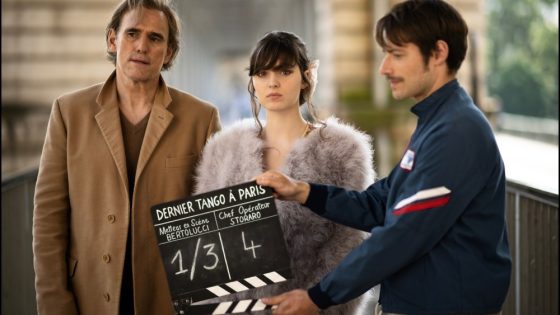“Being Maria” is a flawed but fascinating look at the turbulent life of actor Maria Schneider, played by a game Anamaria Vartolomei (“Happening”). It limns her rebellious teen years, her big breakthrough at 19 in Bernardo Bertolucci’s “Last Tango in Paris,” and how her trauma on set and the film’s notoriety impacted her subsequent career and mental health. Helmer Jessica Palud (“Back Home”) and co-scripter Laurette Polmanss loosely adapt a memoir by Schneider’s younger cousin to show events through the star’s eyes. Despite a clunky air of earnestness and some soap opera-like scenes, plus the overly familiar arc of a celebrity spiraling out of control, the film resonates because the central topic is so of the moment. It’s a cautionary tale about a naïve and powerless young talent abused in the name of art, as well as the agonizing aftermath of her maltreatment.
The narrative depicts formative events in Maria’s life from 1967 to 1980. Raised by a tightly-wound single mother (Marie Gillain), it portrays her as seeking praise, love and acceptance. At 15, she contacts her birth father, well-known French actor Daniel Gélin (Yvan Attal). Her continued association with him and his friends such as Alain Delon causes her unstable mother to kick her out. Maria finds succor with her uncle Michel (Jonathan Couzinie), and eventually a Paris agent (Stanislas Merhar), along with small parts in film and on stage.
When the boundary-pushing Italian director Bernardo Bertolucci (Giuseppe Maggio) is drawn to something wounded about her, and casts her to play opposite American superstar Marlon Brando (an excellent Matt Dillon), she thinks her dream of success is within reach. But Bertolucci, on a roll after “The Conformist,” sees her more as a blank page that he can manipulate, and Maggio perfectly embodies the charismatic young auteur’s seductive qualities. Although she reads the script and agrees to the required nudity, Bertolucci encourages his idol Brando to improvise and go further with the violence his character inflicts on hers.
Palud, herself once an assistant to Bertolucci (and per the press notes, in possession of the original shooting script of “Last Tango”) spends nearly 30 minutes recreating the rehearsals and shoot. While Brando is protected and catered to, the vulnerable, often unclothed Maria endures 14-hour days and weekend work. During an intimate bathtub scene, Brando suddenly pushes her head underwater, prompting surprise and anger. It’s a foreshadowing of the notorious improvised “butter scene,” where Brando’s character humiliates and sodomizes hers. Although the sex isn’t real, Maria’s tears and mortification are. Perhaps some of the mostly male crew who look on feel her pain, but no one comforts her. Moreover, neither Brando nor Bertolucci apologizes for subjecting her to this hard-to-watch, unscripted moment.
When the film is released, its raw sexuality ignites a firestorm within the media and audiences. The sensitive Maria is suddenly the center of attention and vitriol without any advice or training in how to handle it. When she admits to one journalist that the sodomy scene took her by surprise, her cynical agent scolds her, saying, “It’s your job to sell the dream to the press. See it as a performance.” Even her own father is dismissive of her feelings, telling her how great it is that she could become a famous actress with just one role.
The film’s remaining 45 minutes prove less interesting and more melodramatic. They show the depressed Maria’s life veering out of control. She sleeps around, taking male and female lovers, with Noor (Celeste Brunnquell) among the most caring of them. Addicted to heroin, Maria acquires a reputation for being difficult on set. Offered mainly sex-kitten roles that require nudity, she more than once storms off a production. The film concludes in 1980, after her appearance in Jacques Rivette’s “Merry-Go-Round,” a title apropos to a full-circle moment that brings proceedings to a close.
Portraying the world through Maria’s eyes using, for the most part, close-ups on her face helps mask a certain impoverishment in the production design. It appears as if most of the film’s budget went to period costumes and certain period songs, such as Talking Heads’ “Psycho Killer.” The thriller-like strings score by Benjamin Biolay is used sparsely.
Oddly, the film ends without any indication that Maria lived for another 31 years and appeared in more than 30 other film and television productions, before dying of breast cancer in 2011. At least, however, it shows that, unlike other stars of the time, she spoke out about her maltreatment, although she was ignored, or worse, ostracized.
Source Agencies



